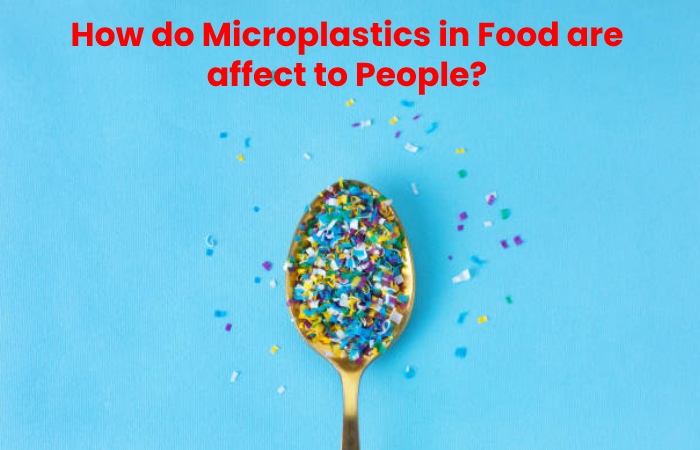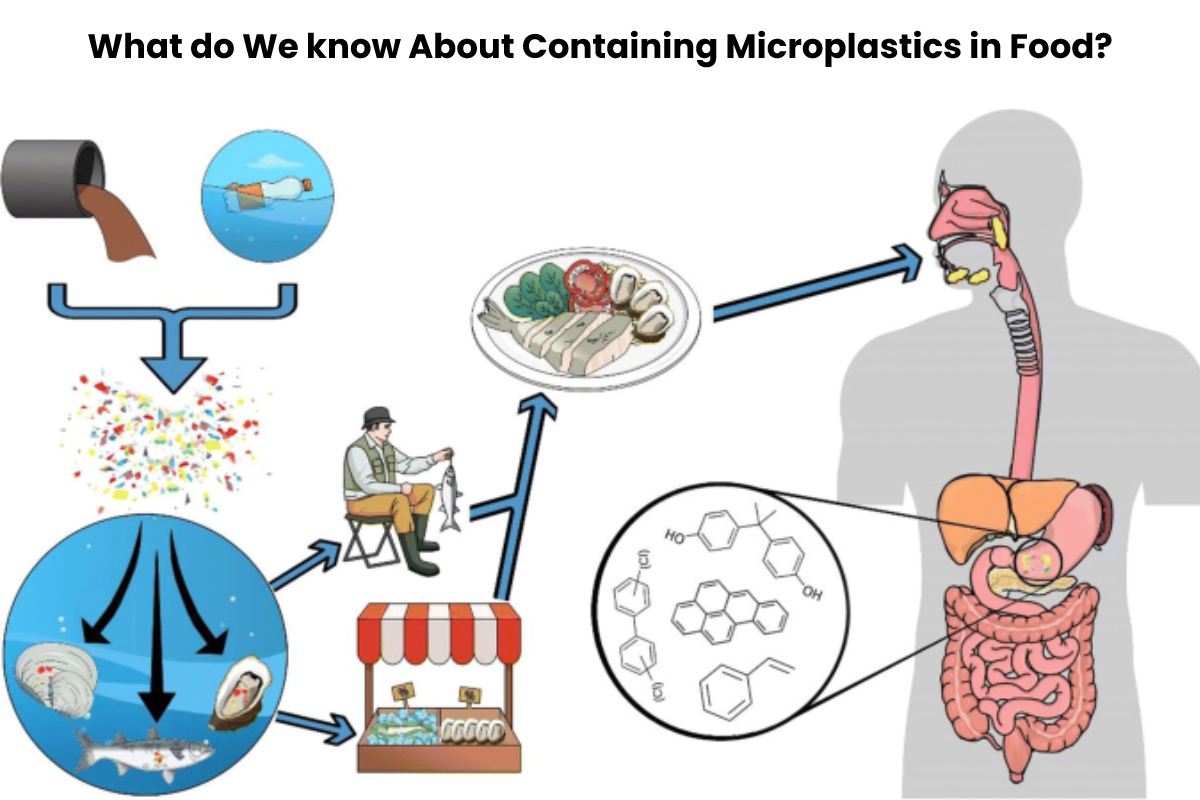Microplastics in Food – The majority of plastic manufactured worldwide remains to utilize in food and beverage packaging. However, when plastic is used, it wears down and disintegrates into tiny pieces known as microplastics. In this Honest Nutrition Feature, we go through the possible risks of microplastics, how they contaminate food, and how to lessen exposure.
In 2016, 322 million metric tonnes of plastics were manufactured worldwide, of which Trusted Source provided 60% to the food and beverage sector for food packaging. Numerous compounds, such as stabilizers, lubricants, fillers, and plasticizers, are included in these plastics.
Table of Contents
Shared Microplastics in Food
The microplastic chemicals current in food is a mixture of rusted sources that manufacturers deliberately add, such as fillers and stabilizers, and those that accumulate as byproducts, such as residues and impurities.
Some common microplastics present in food include:
Bisphenol A (BPA): Manufacturers use trust Sources for this plasticizer to type polyvinyl chloride, the “parent” plastic of many products.
Dioxin: This is a byproduct Trusting Source of herbicides and paper lightening contaminating the environment.
Phthalates Trusted Source: These make plastics more flexible, transparent, and durable and are present in many food packaging types. Polyethene and polypropylene make packaging lightweight and durable and are the most common trusting Source of plastics in nutrition and the environment. Microplastics originate in smaller quantities in food, comprise BPA and BPF, mono and mono
The Dangers of Microplastics
Microplastics are the fragments of stabilizers, lubricants, fillers, plasticizers, and other chemicals that manufacturers use to give plastics their desirable properties trusted Sources, such as transparency, flexibility, and durability.
However, experts have classified many of these chemicals as toxic and harmful to human health. Environmental circumstances, such as heat, cause the plastic to break into smaller fragments called microplastics, which can migrate into food.
Single-use water bottles, to-go containers, food cans, and storage wraps are examples of plastic-based food packaging containing microplastics. Heating food in plastic packaging, long storage times, and the type of plastic packaging a person uses all affect trusted Sources, the number of microplastics and their harmful chemicals that migrate into food.
How do Microplastics in Food are affect to People?

We still don’t distinguish if or how microplastics touch humans.4 Additionally, as plastics often contain flavours or other substances. It is essential that the potentially harmful effects of exposure to these are also carefully studied beforehand any conclusion can be drawn.4
The European Food Safety Authority (EFSA) states that there is currently not enough data on how microplastics in food and the environment behave in the body to evaluate how microplastics affect human health fully.5 They propose that research institutions should continue their research and further develop and standardize the methods they use to analyze microplastics and assess potential risks they might pose. It will make comparing results from different research institutions easier and get a more transparent overview of the state.
Are there Microplastics in Food
overall, limited knowledge on the occurrence of microplastics. But they have remain found and studied in several different foods, with 4, 5, 9, 10:
- fishing and seafood
- table salt
- cocktail
- honey and sugar
- blow water.
Microplastics have too remain found in soil due to contamination from items such as discarded packing or plastic agricultural apparatus. More education is need to completely comprehend the inferences of microplastics in the soil environment. For example, whether this affects vegetables or other crops grown in the soil.1
Does Drinking Water Contain Microplastics?
Microplastics have remain found in drinking water and water sources. But the amounts vary significantly between separate samples and water kinds.3,14 As with all investigations. It takes time to gather information to conclude. Though there is already a lot of research on microplastics in drinking water. More and more robust data is wanting before any clear answers can remain given. Researchers are working on refining the methods for taking samples and analysis, which in the end can help us to understand better the exposure of microplastics from drinking water and their potential effect on our health.14
Conclusion
The fragments of stabilizers, lubricants, fillers, plasticizers, and other compounds that manufacturers use to give plastics their desired qualities. Such as transparency, toughness, and flexibility, are known as microplastics. Ingestion of microplastics results in increased inflammation, impaired fasting glucose, insulin resistance, type 2 diabetes, and heart disease, among other health problems.
Microplastic exposure from food is substantial. But you may reduce it by consuming less highly processed foods, adopting eco-friendly food packaging, and switching to glass or stainless steel water bottles instead of plastic ones.
Also Read: Benefits of Coconut Water – Introduction, And More

